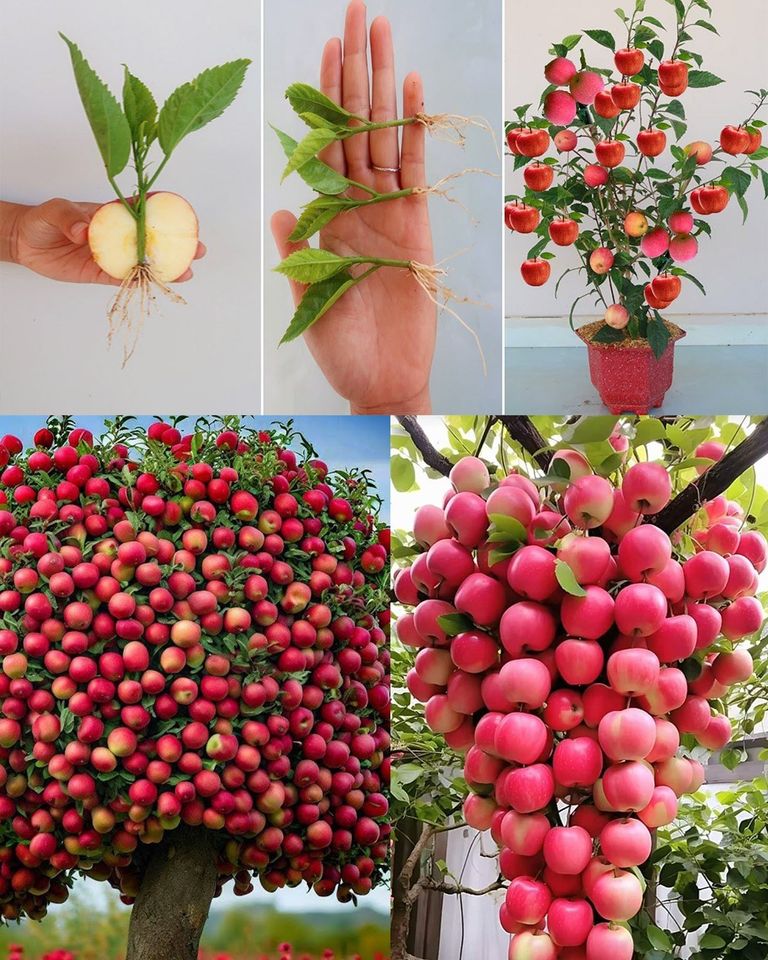The apple is one of the most commonly consumed fruits. Whether in cakes, compotes or clafoutis, there is no shortage of recipes to enjoy this juicy fruit. In addition to its sweet and sour taste, the health benefits of apples cannot be overlooked. We all know the popular saying, “An apple a day keeps the doctor away.” To get the most out of this fruit, learn how to grow an apple tree for an organic harvest from just a few seeds.
Don’t throw away the seeds after taking a bite of your apple. They can serve as seeds to grow your apple tree and fully enjoy the sweet fruits. However, choose seeds from an organic apple to ensure that your tree is free of any traces of pesticides. To grow your fruit tree, you need to go through several stages.
Actors of the TV series “Twenty Twenty” exchange compliments
Limelight Media
Do you think her looks are distinctive? So you will be shocked if you see these pictures
Limelight Media
Step 1: Dry the apple cores
Collect the seeds from your fruits and clean them thoroughly to remove pulp and fruit residue.
After cleaning the seeds, dry them with a cloth and place them outdoors to remove any remaining moisture.
Wrap your seeds in a damp paper towel or tissue paper. Then place them in a sealed plastic bag or container to place in the refrigerator. It is important to provide winter conditions for the seeds as they develop shoots and roots during this period. You can also germinate the seeds in damp cotton or paper towels instead of using a paper towel.
The germination process takes time, so you should leave your seeds in the refrigerator for at least 8 weeks. Remember: Even if you’ve created an artificial winter for your seeds, it’s best to germinate them during the actual winter season so you can plant them in early spring, after frost, when the seeds come out of the Rest phase awaken. After your seeds have germinated, you can begin planting.
Step 3: Planting the Seeds
To do this, choose a pot with soil with a neutral pH value. Dig a hole in the soil slightly larger than the size of your seed. Since the young sprout is still fragile, you should be careful when placing the germinated seed in the hole. The sprout should point downwards.
To stimulate the growth of your apple tree, you can only add compost and avoid fertilizer. Then cover your seed with soil, gently tamp it down, and water the soil. Place your pot in partial shade at room temperature. Apple trees appreciate warmth, but the sun could burn your small and fragile apple tree. After a few weeks you will notice the first leaves appearing. Only then can you place your pot in full sun.
Step 4: Transplanting the Apple Tree
When your apple tree reaches 10 cm in height, you can move it outside. You can transplant it into a large pot, but preferably plant it in the ground. Your apple tree needs space and sunlight. An apple tree needs more than 6 hours of sunlight per day. For the soil, choose a well-drained substrate with a neutral pH that retains water.
Once your tree begins to take root in the soil, water it every 10 to 12 days. You can space out watering as the tree grows. However, if the weather is very dry, prefer weekly or bi-weekly watering.
To have an apple tree and ensure fruit production, it is recommended not to rely only on the seeds of a single variety of apple, but to collect seeds from two different varieties to plant together. This is because the apple tree is a self-sterile fruit tree. This means that the pollen from one apple variety is not enough to fertilize the flowers of the same apple tree and produce fruit. This also applies to other fruit trees such as cherry, plum or pear trees.
Apple tree care
It is not necessary to prune your young apple tree as this will delay fruiting, especially since apple trees usually take time to bear fruit. However, you can remove any diseased or dead branches. Remember to also remove any buds to avoid having to prune branches.
If your tree is large enough, give it some fertilizer to feed it in the spring. Avoid using compound fertilizers designed to both fertilize trees and kill weeds, as this type is not suitable for apple trees.
This guide will help you cultivate your apple tree at home to enjoy the taste of organic apples. Just be patient because it takes time to grow.
Do you like that? Share inspiration with your friends!

